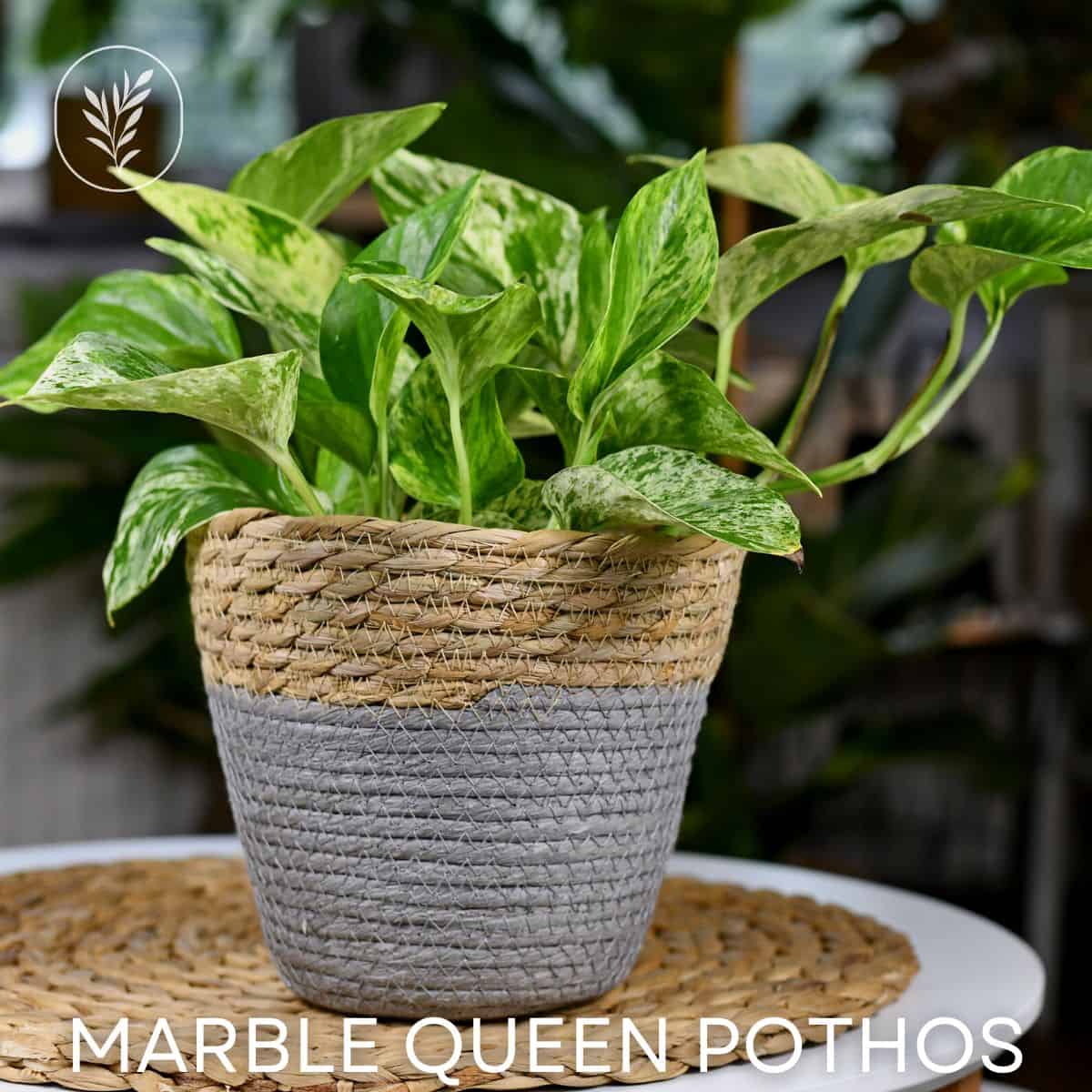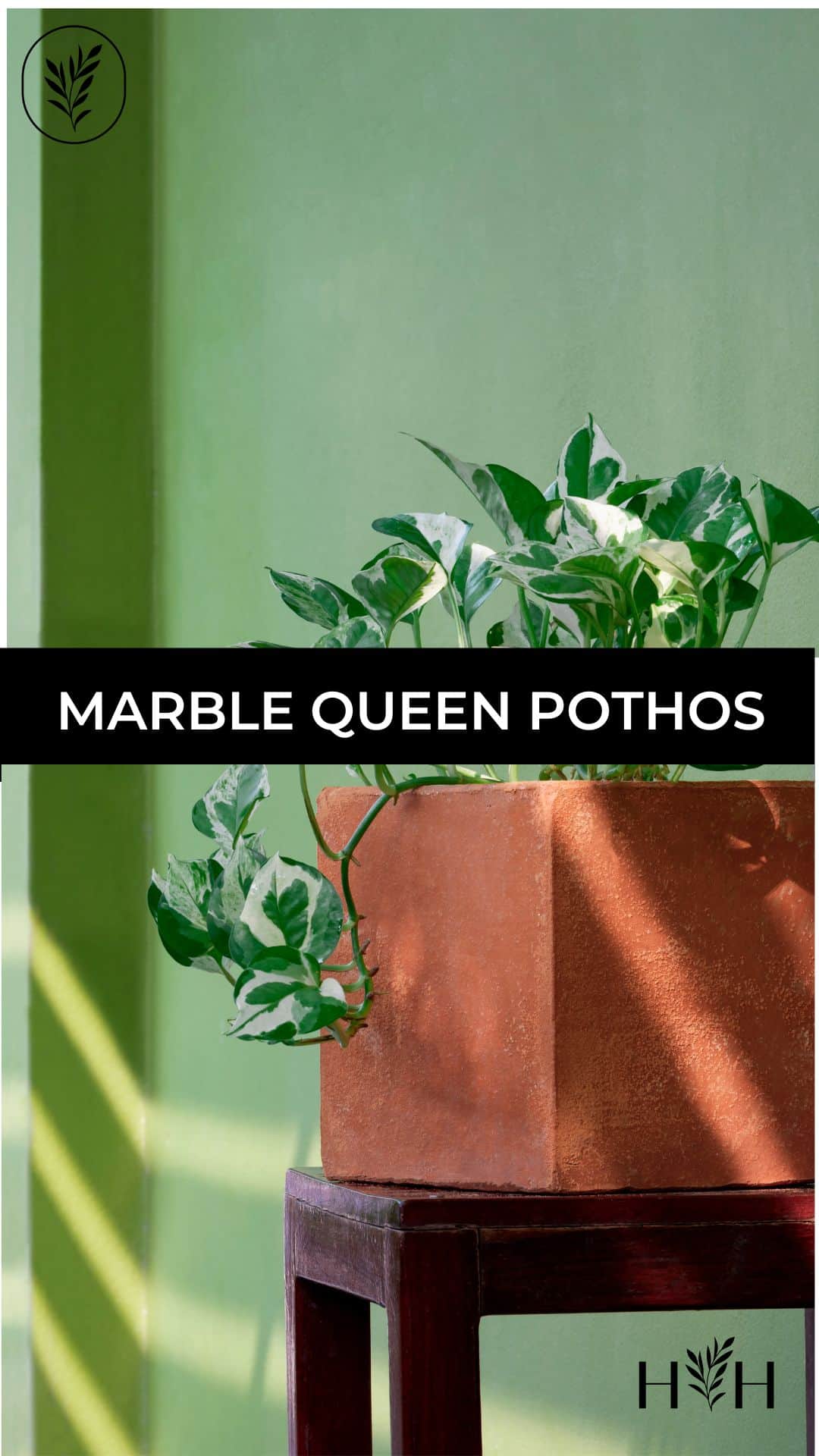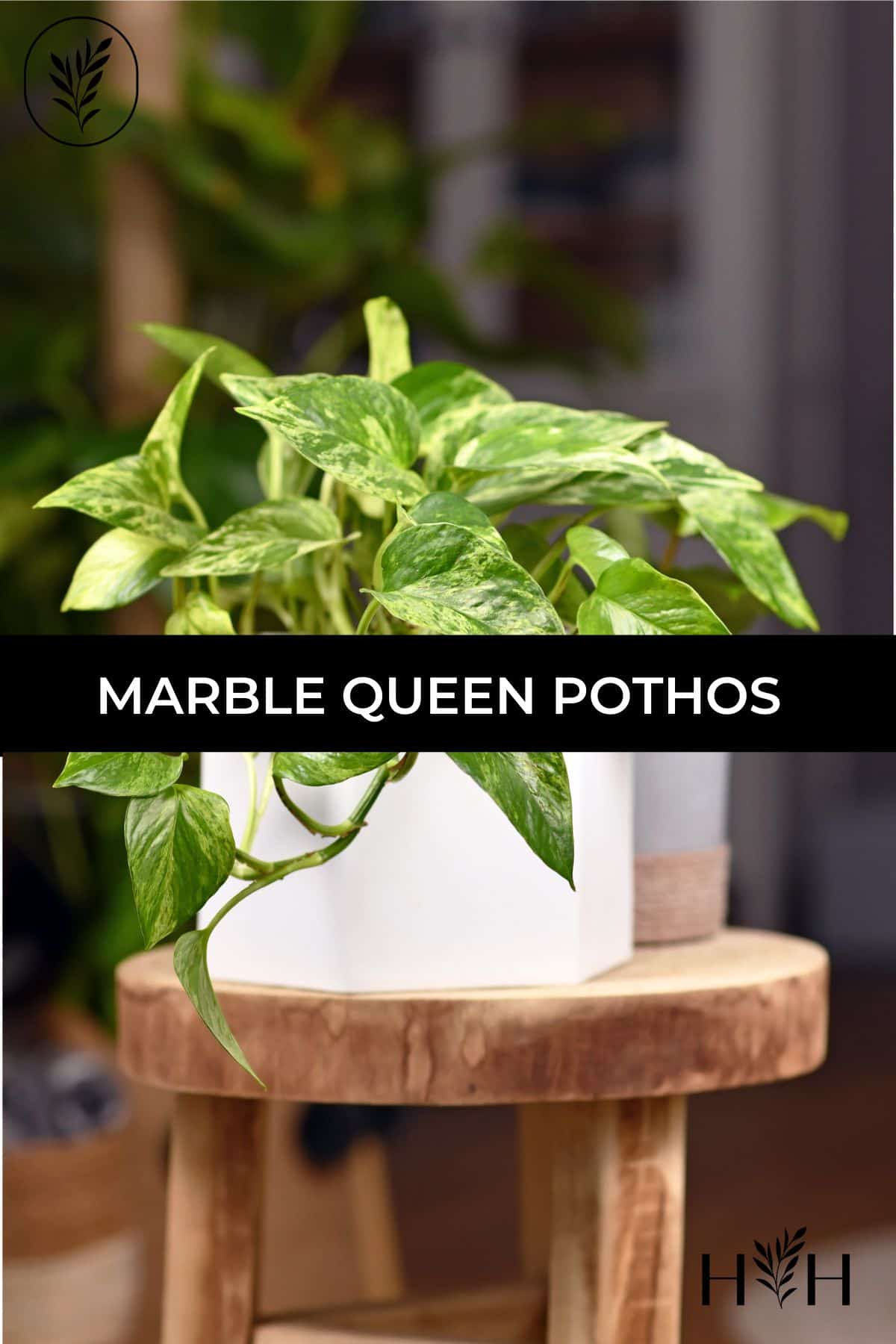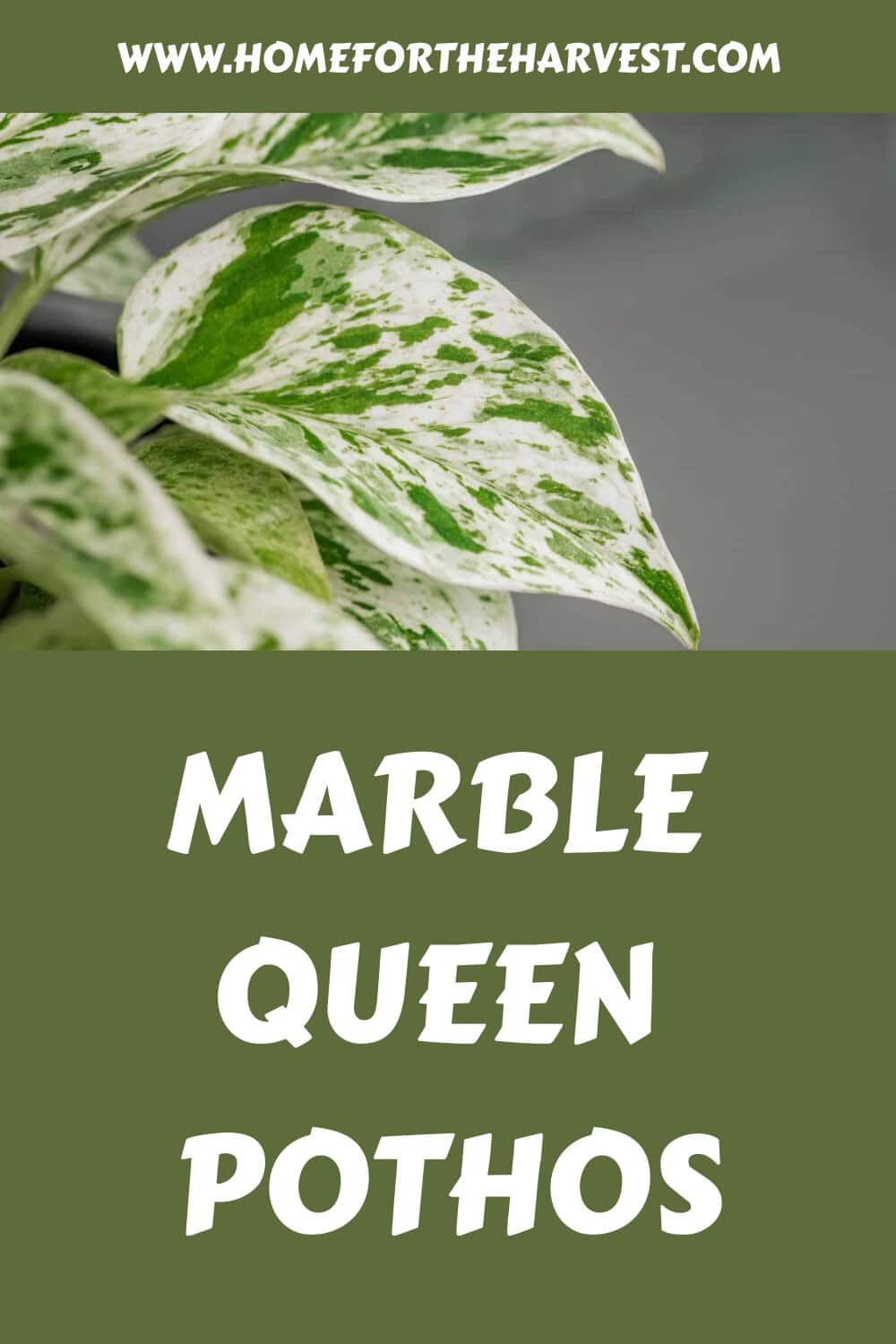Pothos plants are the most widely recommended houseplants for beginners. They look stunning anywhere they are placed and are incredibly adaptive to a wide range of conditions. The Marble Queen pothos, a popular cultivar, is one of the most sought-after varieties of them all.
Marble Queen pothos are easy to grow and very low maintenance. They need bright indirect sunlight to maintain their variegation and love the warmth and high humidity. Watering regularly as soon as the top inch or two of soil has dried out completely will deliver the strongest growth. Along with repotting every few years, they benefit from an application of fertilizer every 6-8 weeks. Prune long or leggy growth and don’t forget to use those cuttings to propagate brand new plants.
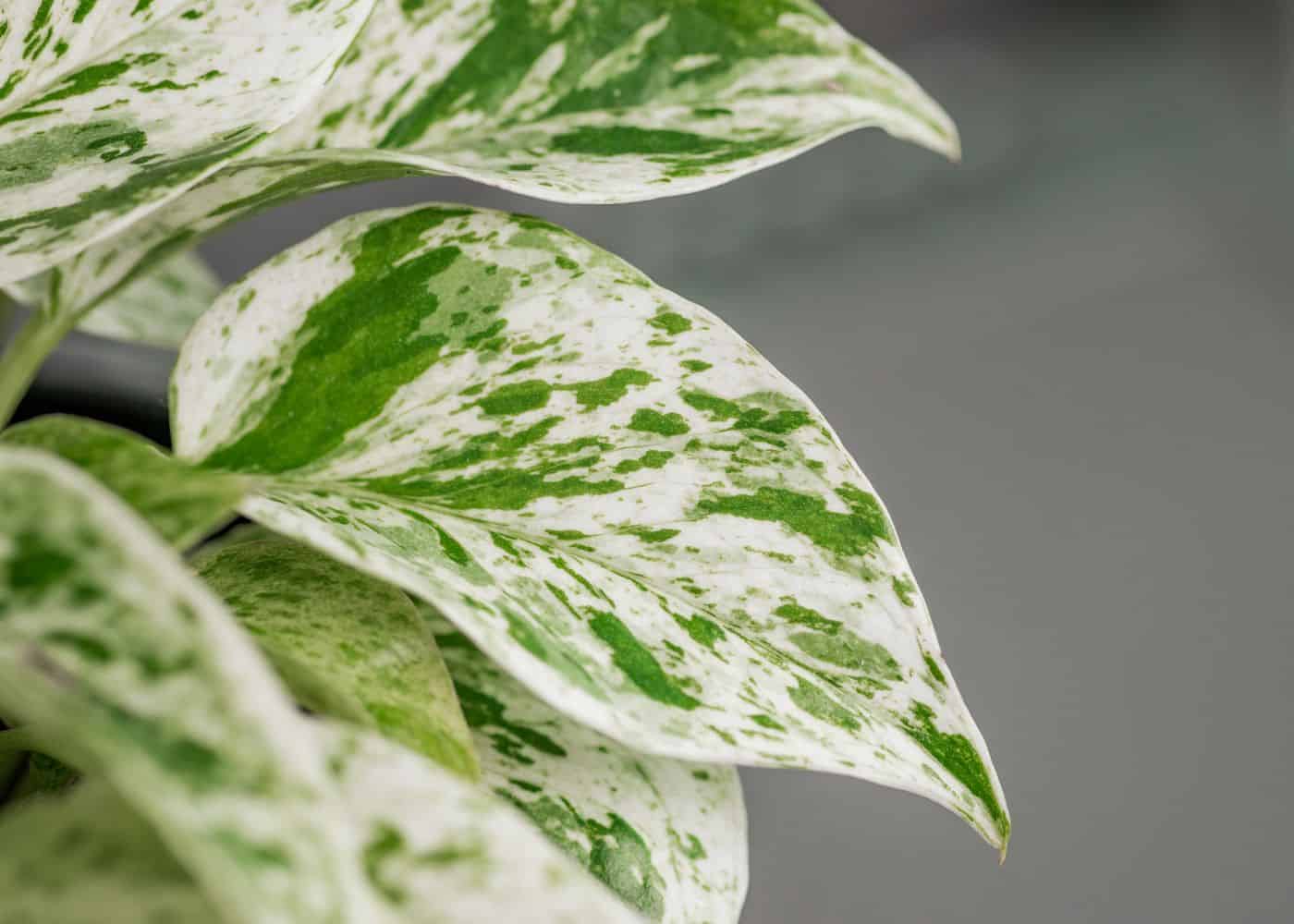
Marble Queen pothos basics
Pothos plants are scientifically known as Epipremnum aureum. They were previously placed in several genera before being placed in the Epipremnum genus. They have an impressive list of common names in addition to pothos, including Devil’s Ivy, after its ability to spread rapidly and quickly take over areas with masses of vines.
Marble Queen is a cultivar of Epipremnum aureum, and one of the most popular varieties around. It features highly variegated leaves with flecks of white and green that you won’t find on many other houseplants. Despite the high levels of variegation, these plants are not fussy or difficult to care for, making them a great entry into the houseplant collecting world for those who are interested.
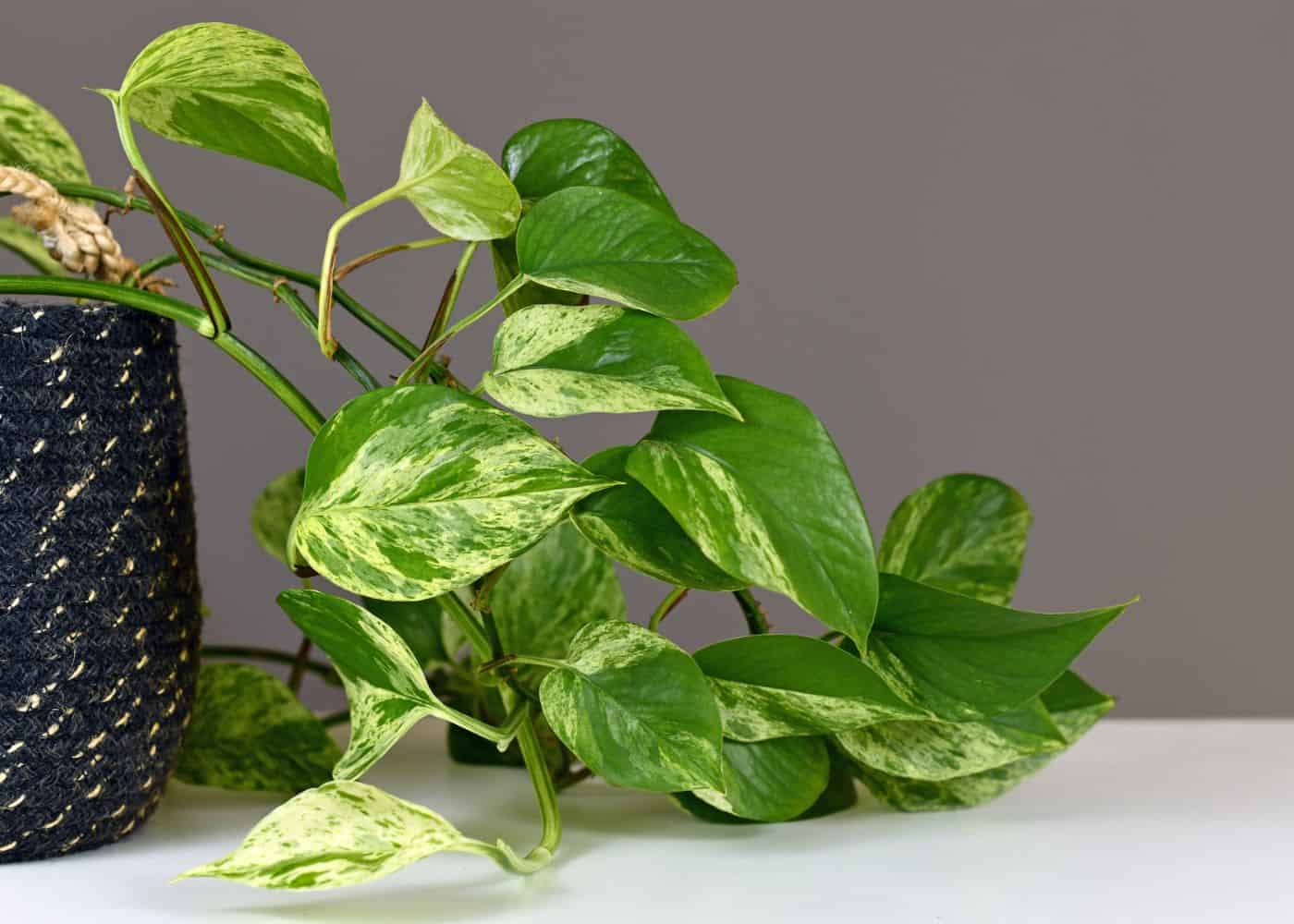
Sunlight requirements for Marble Queen pothos
Light is an essential part of growing a strong and healthy Marble Queen Pothos – more so than it might be for other houseplants. This is due to the variegation of the leaves. Large white patches of foliage are unable to synthesize chlorophyll and therefore, are unable to photosynthesize.
Without photosynthesis, your Marble Queen cannot grow effectively or ultimately survive, meaning it will need all the help it can get. Give your Marble Queen a full day of bright indirect light right near a window in order to preserve this stunning variegation. If not, you may find the leaves reverting to green, unable to return to their previous color.
An hour of gentle direct morning sun can also improve conditions for your Pothos. However, they should not be placed in harsh direct sun during midday to avoid burning the leaves and leaving brown patches on the areas exposed to the light source.
Watering Marble Queen pothos plants grown in pots
Although they are not majorly thirsty plants, your Marble Queen will grow best when watered regularly and consistently. The correct time will depend on environmental conditions around your plant, as well as changes with the season.
Aim to water as soon as the top 1-2 inches of soil have dried out, not waiting too long to stop the glossy leaves from wilting and curling. Expect to water around once every 1-2 weeks during the growing season and once every 3 weeks or so in winter, changing the timing depending on light levels, humidity and temperature.
While they like water, Pothos plants don’t appreciate soggy soil. They need plenty of drainage to avoid one of the most common houseplant problems around – root rot. Never water when the soil is still moist and make sure your chosen pot and soil have enough drainage to rid the soil of excess moisture. If you do encounter any root rot, trim the affected roots and repot immediately.
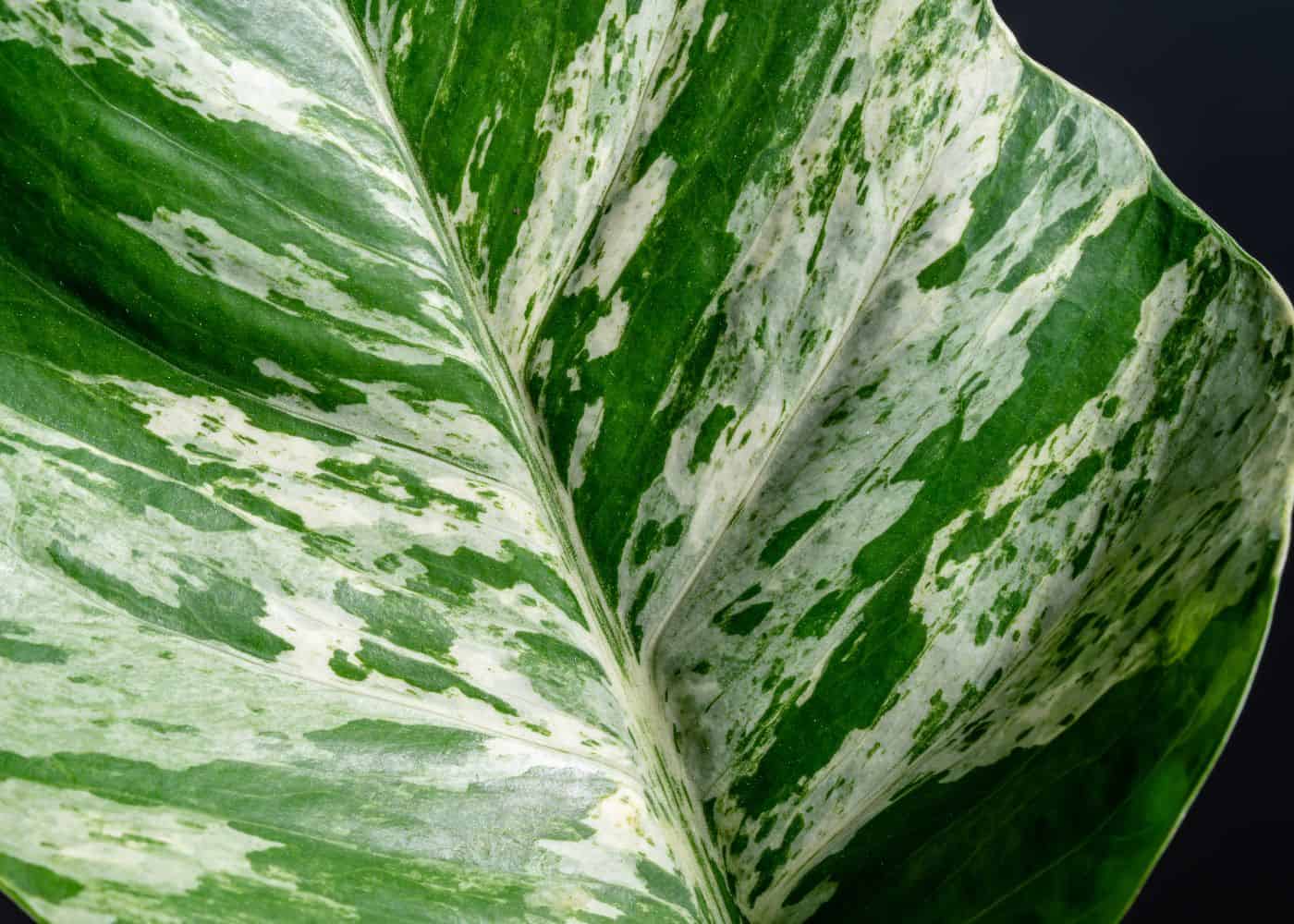
Humidity preferences of Marble Queen pothos
Pothos plants are believed to be native to tropical forests in French Polynesia. They are lovers of high humidity, often seeing humidity levels as high as 90% in their native habitats. Luckily, they are also tolerant plants that can adapt to a wide range of indoor conditions.
As long as your humidity is above 40%, you should have no problems growing a Marble Queen. They prefer humidity closer to 60% for the strongest growth but won’t struggle too much if it is lower than that. If you need to raise the humidity, place the plant on a tray filled with pebbles and water or use a humidifier if your air is excessively dry.
Temperature requirements of Marble Queen pothos
Although they are adaptive plants, one thing Marble Queens cannot handle is cold temperatures. They love heat and can easily handle temperatures as high as 90F.
For strong growth throughout the year, keep temperatures above 65F. If they dip far below that, your vine will likely stop growing and may even face some cold damage. Around 75F and higher will deliver the best possible performance from your Pothos.
Repotting Marble Queen pothos plants
Pothos are known as quick-growing plants and, despite the highly variegated leaves, Marble Queen is no exception. The vines don’t mind being slightly pot-bound but will develop quicker when repotted every couple of years. Repot as soon as you notice roots growing through the drainage holes or when vines stop growing and leaves begin to wilt.
Follow these easy steps to repot your Marble Queen:
- Remove the plant from its existing pot. If it gets stuck to the sides, squeeze the pot gently to release it. You can also run a knife along the edges of the soil to release the plant.
- Tease the roots gently to loosen them, allowing them to grow outwards into the new pot rather than circling around each other.
- Fill a pot one size up with a loose houseplant potting mix. It should contain perlite to improve drainage and coconut coir or palm peat for water retention without weighing down the mixture.
- Plant the Marble Queen in its new pot, filling in any gaps with the remaining soil mix.
- Water after repotting to allow the roots to settle.
- Signs of transplant shock include wilting and yellowing in the leaves. Keep environmental conditions as consistent as possible and avoid disturbing the roots too much to limit the chances of shock.
Fertilizing Marble Queen pothos
For those looking for a full and lush Marble Queen, fertilizer is key. If you repot often into high-quality potting soil, you may not need to fertilize, but your Pothos will likely grow far better with a boost when needed.
Look for a balanced houseplant fertilizer with equal NPK values. It should also contain secondary and micronutrients to deliver everything your houseplants are looking for. Liquid fertilizers are absorbed the quickest, easily dissolved in water, but slow-release fertilizers mean you’ll need to fertilize far less often.
Only fertilize during spring and summer every 6-8 weeks, or sooner, depending on the strength of your chosen fertilizer. Stop fertilizing in fall and winter to give the plants a break, returning again in early spring the following year.
Pruning Marble Queen pothos vines
The long vines of the Marble Queen Pothos, especially when grown in perfect conditions, can quickly get out of hand. If you’re aiming for the indoor jungle aesthetic, with long trails of vines above your head, this may not be a problem. However, pruning will become an important task if you want to control this chaotic growth.
Luckily, it’s not a difficult task to complete. Simply trimming a few inches off the ends of the vines whenever they appear too long is enough to manage this growth and keep your plant in good shape. Don’t forget to save those cuttings to propagate later.
Pruning can also help maintain the health of your Marble Queen. If stems begin to get long and leggy due to lack of light, trimming them back and improving conditions will help the vines grow back stronger. Pruning is also a key part of pest and disease management, allowing you to avoid the spread of the problem around the plant and to your other houseplants.
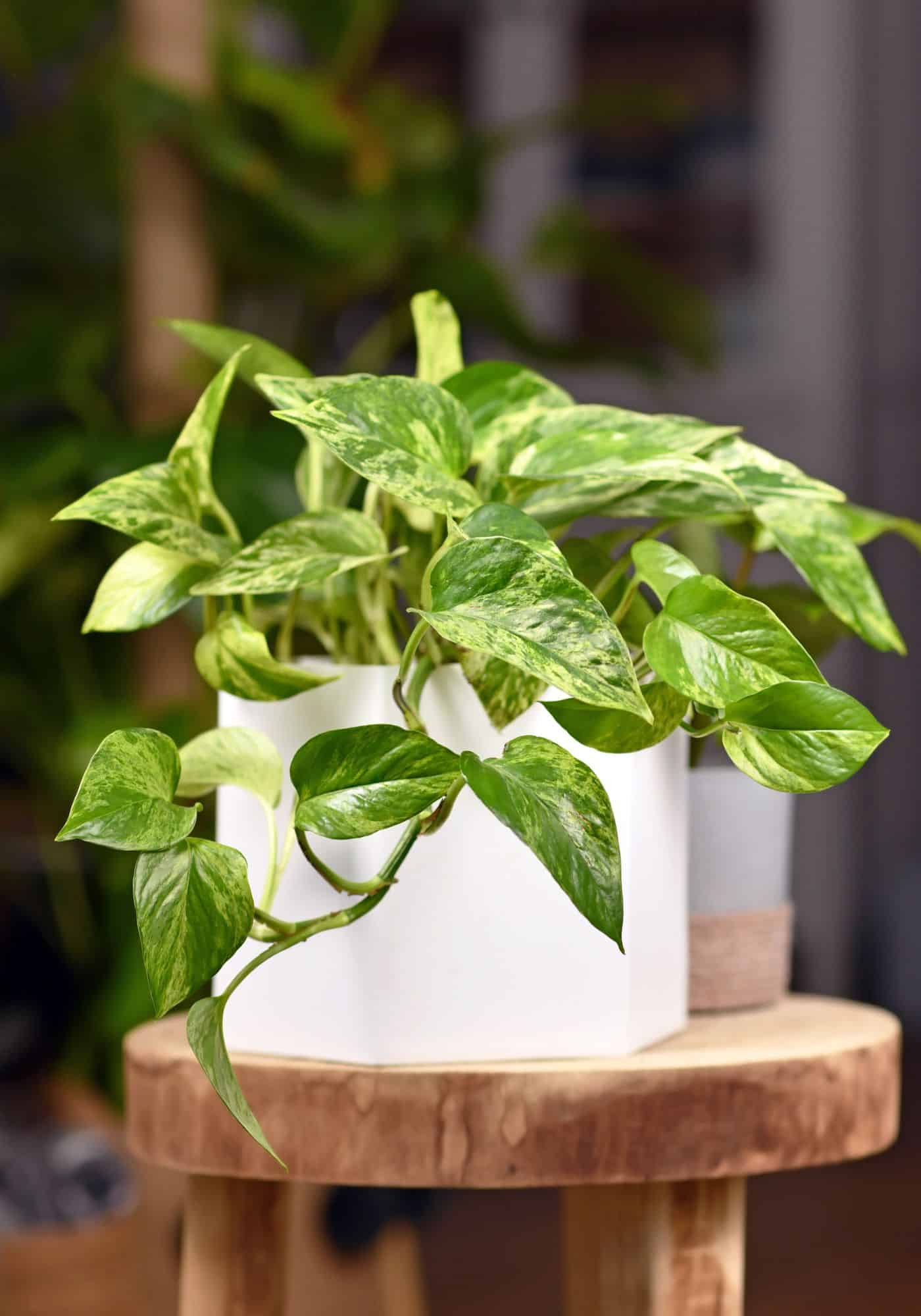
Propagating Marble Queen pothos
Marble Queen Pothos, due to their stunning variegation, previously fetched quite a high price. Although the costs have certainly come down as the plant became more widespread, they can still be pricey. If you want to grow more of them, the easiest way to do that is through propagation.
Pothos are some of the easiest plants to propagate. Cutting along any point in the vine, they readily produce roots in water or soil to develop into strong, full, and healthy plants in no time.
Start by removing a cutting from the parent plant. Choose a healthy vine that doesn’t have any damaged growth or signs of disease to give you the highest chances of rooting. You can cut a section around four inches long off the end of a vine, or remove an entire vine and cut it into sections as you go.
Using sharp pruning shears, remove the cutting just below a node. These are the points where the roots will emerge and need to be included to propagate successfully. Remove the leaves from the bottom half of the cutting to expose that node. Then, place the cutting in a glass of water for the roots to develop.
Top up the water as it evaporates and change it completely around once a week to prevent bacterial growth. When the roots are an inch or two long, group a few cuttings together and plant in a light houseplant potting mix for a full and lush plant.
Pests & diseases common with Marble Queen
Marble Queen Pothos don’t often experience issues with pests and diseases. However, they are vulnerable to certain problems – as any indoor plant is.
Watch out for small spider mites, scale, mealybug and flying fungus gnats. Each of these pests can weaken the plant, leading to wilting, yellowing, and defoliation. Remove any pests you spot with a targeted insecticidal soap or horticultural oil, continuing to apply until the problem is removed. It’s also important to quarantine the plant until the problem is resolved to stop the spread to any other houseplants.
Blight is also a possibility, although unlikely. If you suspect any disease, prune away affected leaves and stems immediately and keep an eye out for signs of spread.


